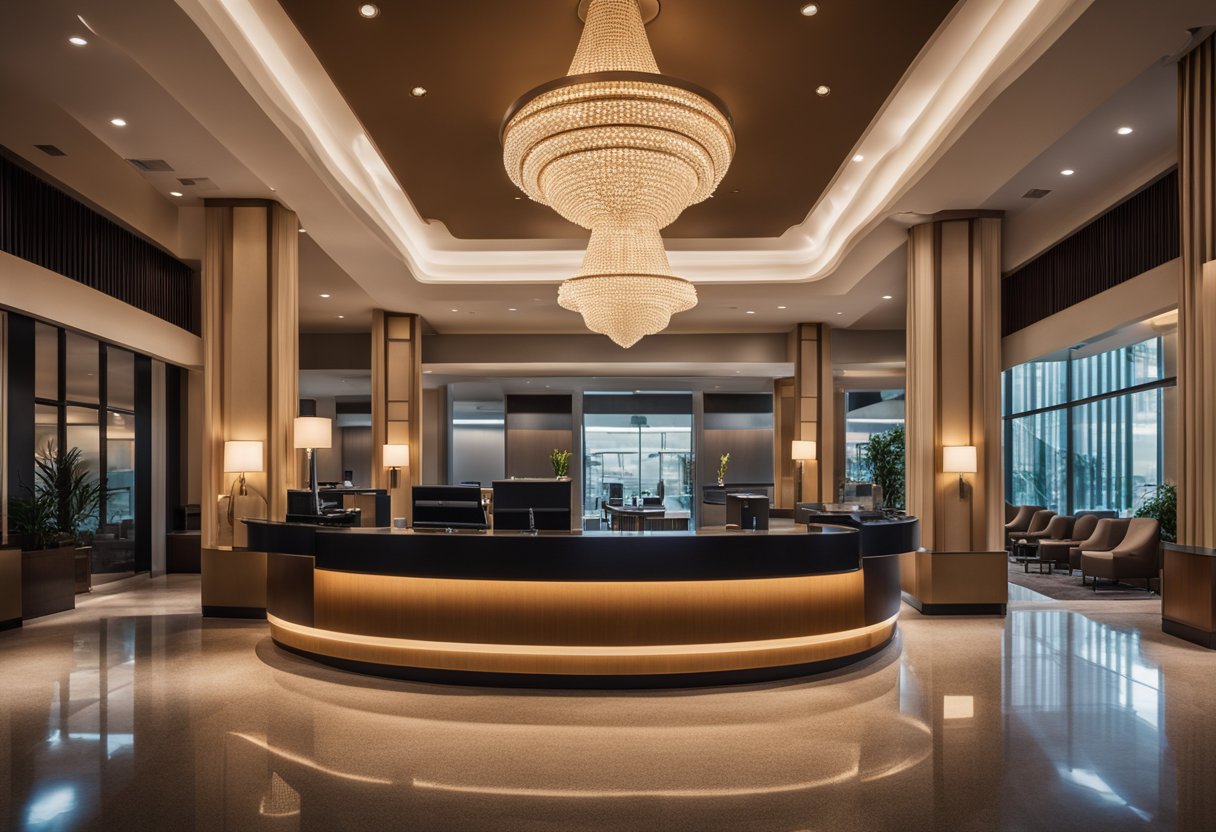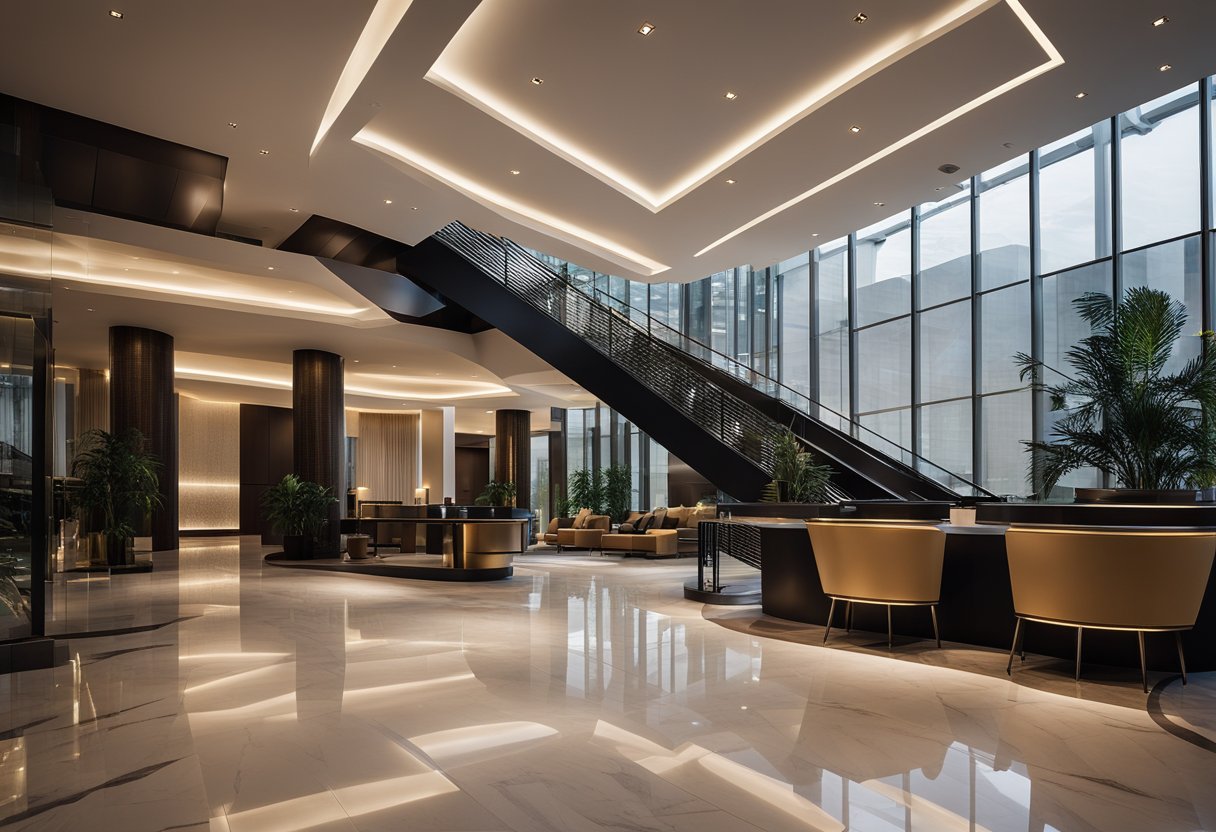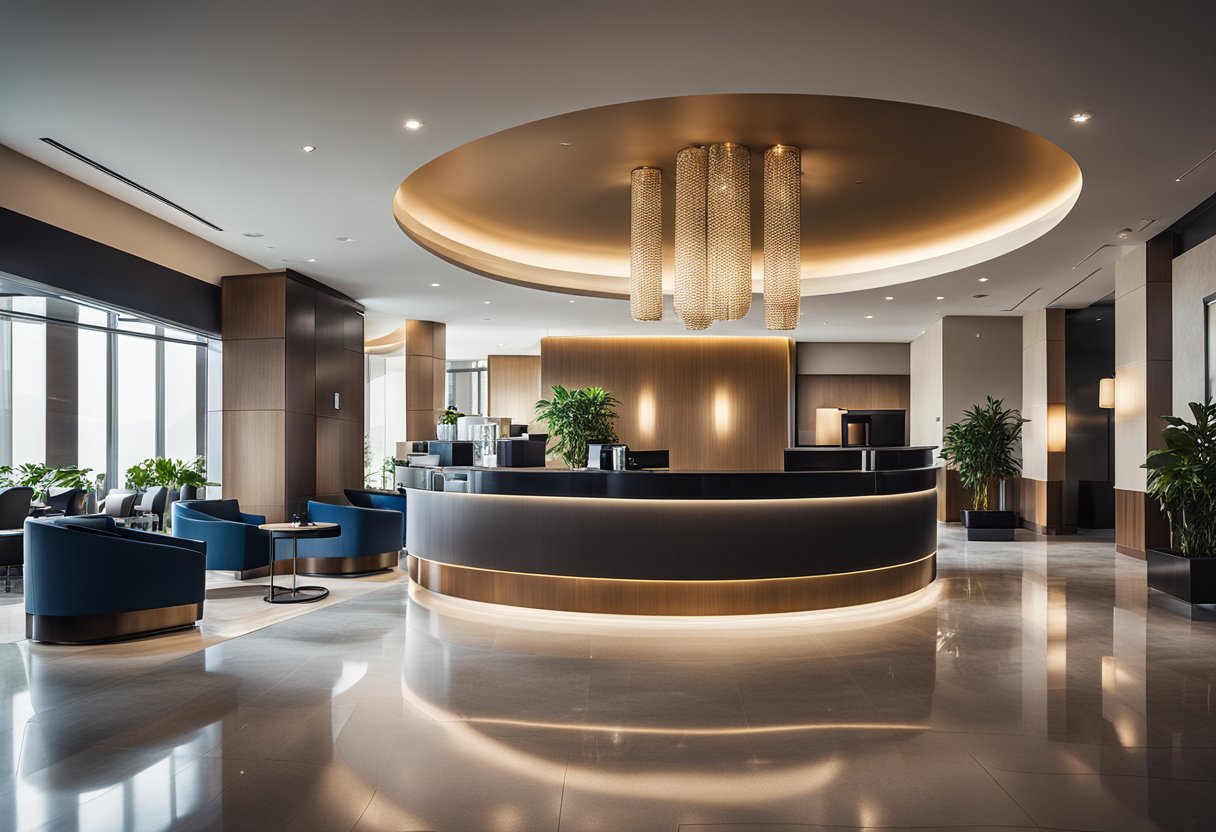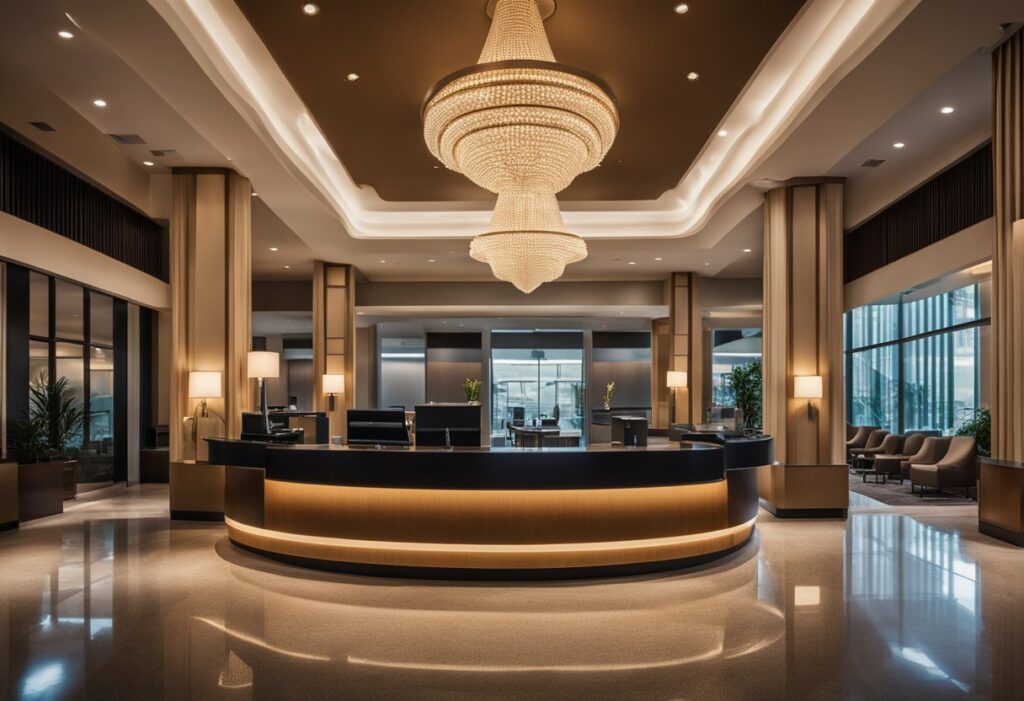Hotel Interior Design Trends: What’s New and Exciting
If you’ve ever stayed in a hotel, you know that the interior design can make or break your experience. The right combination of colours, textures, lighting, and furniture can create a welcoming and comfortable atmosphere, while poor design choices can leave you feeling cold and disconnected. Hotel interior design is an essential aspect of the hospitality industry that plays a crucial role in attracting and retaining guests.

The importance of hotel interior design cannot be overstated. It is a critical factor in creating a memorable and positive experience for guests. From the lobby to the guest rooms, the interior design of a hotel should reflect the brand identity and create a cohesive and inviting environment. A well-designed hotel interior can also increase guest satisfaction, leading to positive reviews, repeat bookings, and ultimately, increased revenue.
Key Takeaways
- Hotel interior design is a crucial aspect of the hospitality industry that can greatly impact guest experience and satisfaction.
- A well-designed hotel interior should reflect the brand identity and create a cohesive and inviting environment.
- Good hotel interior design can lead to positive reviews, repeat bookings, and increased revenue.
Fundamentals of Hotel Interior Design

When it comes to hotel interior design, there are several fundamental principles that designers and architects must keep in mind. These principles aim to create a comfortable, functional, and visually appealing space for guests to enjoy. Here are some of the most important considerations:
Balancing Form and Function
One of the key principles of hotel interior design is finding the right balance between form and function. While sleek lines and attractive design are important, they must not come at the expense of functionality. Guest rooms and public spaces must be designed to cater to the needs of guests, with amenities and features that enhance their experience.
Incorporating Local Culture and Art
To create a unique and memorable hotel experience, designers must incorporate local culture and art into the interior design. This can include showcasing the work of local artists, using natural materials that reflect the surrounding environment, and incorporating elements of local culture into the design.
Embracing Sustainability and Green Practices
Sustainability and green practices are becoming increasingly important in hotel interior design. Using natural materials, reducing waste, and implementing energy-saving technologies are just some of the ways in which designers can create a more sustainable and eco-friendly hotel environment.
Colour Psychology in Design
Colour psychology plays an important role in hotel interior design. Different colours can evoke different emotions and moods, and designers must carefully consider the impact of colour on guests. For example, blue can create a sense of calm, purple can evoke luxury, and yellow can add a bright and cheerful touch.
Luxury and Comfort in Guest Experience
Guests expect a certain level of luxury and comfort when they stay at a hotel. This can be achieved through the use of opulent materials, such as gold accents and expensive furniture, as well as through spacious and well-appointed guest rooms and public spaces.
Innovative Use of Space
Innovative use of space is essential in hotel interior design, particularly in areas with high foot traffic such as lobbies and bathrooms. Designers must find creative ways to maximise space while also maintaining functionality and aesthetics.
Lighting and Ambiance
Lighting and ambiance are crucial elements in hotel interior design. The right lighting can create a warm and inviting atmosphere, while also highlighting key design features. Designers must also consider the impact of natural light and how it can be maximised to create a bright and airy space.
Selecting the Right Furnishings and Accessories
Selecting the right furnishings and accessories is essential in hotel interior design. From hooks and switches to faucets and linens, every detail must be carefully considered to create a cohesive and visually appealing space that meets the needs of guests.
Case Studies and Industry-Leading Examples

When it comes to hotel interior design, there is no one-size-fits-all approach. Each property is unique, and the design must reflect the brand promise, target audience, and aspirations of the planners. In this section, we will explore some industry-leading examples of hotel interior design that showcase different approaches to creating a memorable guest experience.
Marriott’s Approach to Hotel Interiors
Marriott is a brand that is synonymous with luxury, and their approach to hotel interiors reflects this. Each property is designed to create a sense of place, with a focus on local culture and history. The design team works closely with local artisans and designers to create bespoke furniture and decor that is unique to each property. The result is a collection of hotels that are both luxurious and authentic.
Philippe Starck’s Design Philosophy
Philippe Starck is a designer who needs no introduction. His approach to hotel interiors is all about creating a sense of drama and surprise. His designs are bold, playful, and often provocative. His interiors are not just spaces to sleep in, but spaces to explore and discover. His work can be seen in hotels around the world, from the Mondrian in Los Angeles to the Hudson in New York.
Shiroiya Hotel: A Blend of Farm and Opulence
The Shiroiya Hotel in Japan is a stunning example of how to blend farm and opulence. The hotel is located in a rural area, and the design reflects this. The interiors are warm and welcoming, with a focus on natural materials and textures. The hotel also features a working farm, where guests can experience farm-to-table dining and learn about traditional Japanese agriculture.
The Boutique Hotel Revolution
Boutique hotels are a relatively new concept, but they have quickly become a popular choice for travellers who are looking for something different. Boutique hotels are all about creating a unique guest experience, with a focus on design, service, and attention to detail. These hotels are often independently owned and operated, which allows the owners to be more creative and flexible in their approach to design.
In conclusion, hotel interior design is a complex and challenging field, but it is also incredibly rewarding. By following the examples set by industry leaders like Marriott and Philippe Starck, and by being open to new ideas and approaches, you can create a hotel interior that is both memorable and profitable.
Frequently Asked Questions

How can one infuse luxury into hotel interiors?
To infuse luxury into hotel interiors, you can use high-quality materials, such as marble, brass, and leather, to create a sense of opulence and grandeur. Soft furnishings, such as plush carpets and richly textured fabrics, can also add a luxurious touch. Additionally, incorporating unique and bespoke elements, such as custom-made furniture and artwork, can elevate the overall design and create a sense of exclusivity.
What are the latest trends in boutique hotel design?
Boutique hotels are known for their unique and individualised designs. Some of the latest trends in boutique hotel design include the use of bold colours and patterns, the incorporation of local and sustainable materials, and the integration of technology to enhance the guest experience. Additionally, many boutique hotels are moving towards a more minimalistic and eco-friendly approach to design.
Which elements are essential for creating a welcoming hotel lobby?
A welcoming hotel lobby should be designed to make guests feel comfortable and at home. Key elements that can help achieve this include comfortable seating areas, soft lighting, and welcoming artwork or decor. Additionally, incorporating natural elements, such as plants and greenery, can create a calming and relaxing atmosphere.
What role does lighting play in enhancing hotel ambiance?
Lighting is a crucial element in creating a welcoming and comfortable hotel atmosphere. Different types of lighting can be used to achieve different effects, such as warm and cosy lighting for relaxation areas, and bright and energising lighting for workspaces. Additionally, using lighting to highlight key design features, such as artwork or architectural details, can add depth and interest to the space.
How can hotel design incorporate sustainable practices?
Sustainable design practices can be incorporated into hotel design in a number of ways. Using eco-friendly materials, such as bamboo or recycled plastic, can reduce the carbon footprint of the hotel. Additionally, incorporating energy-efficient lighting and HVAC systems can reduce energy consumption and costs. Finally, reducing waste through recycling and composting can help the hotel to become more environmentally friendly.
What are the best ways to maximise space in compact hotel rooms?
Maximising space in compact hotel rooms can be achieved through clever design and storage solutions. For example, using built-in furniture, such as wall-mounted desks and fold-down beds, can free up valuable floor space. Additionally, incorporating multi-functional furniture, such as a sofa bed or storage ottoman, can provide both seating and storage in one piece. Finally, using light colours and mirrors can create the illusion of more space and make the room feel more open and airy.



